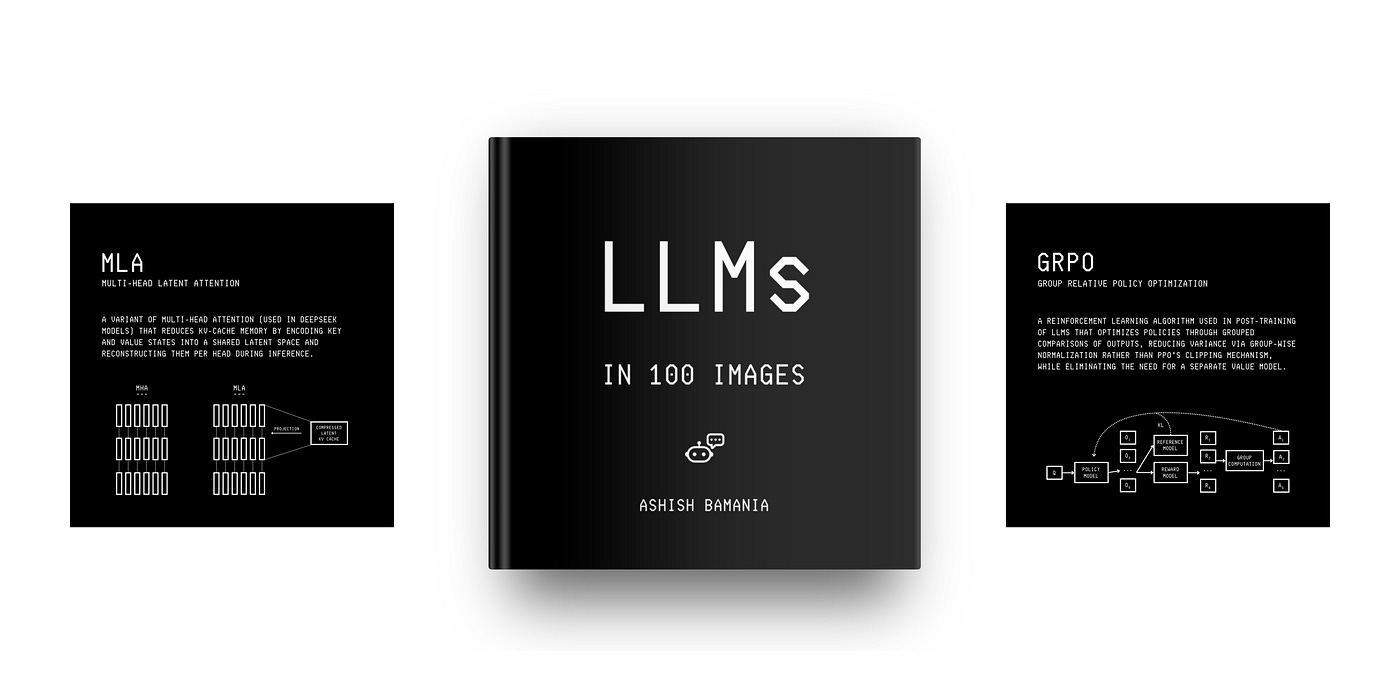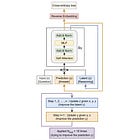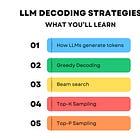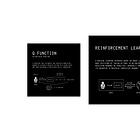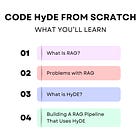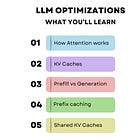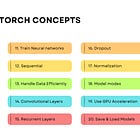October Recap On 'Into AI'
Here are all the interesting AI topics that we discussed last month on the publication.
Hey there! 👋🏻
Thanks for being a curious subscriber to this publication. I’m glad you’re one of the individuals who love staying at the forefront of AI research and development.
Here are the topics we covered on ‘Into AI’ in depth in October 2025.
Before we move forward, I wanted to share that my latest book, called “LLMs In 100 Images“, has become a bestseller!
It is a collection of 100 easy-to-follow visuals that explain the most important concepts you need to master LLMs today.
Grab your copy today at a special early bird discount using this link.
1. Reinforcement Learning On Pre-Training Data Improves LLMs Like Never Before
Training massive AI models is extremely expensive and requires huge amounts of high-quality data, which is becoming scarce and costly to create.
To solve this problem, Tencent researchers have developed a technique called RLPT (Reinforcement Learning on Pre-Training data) that enables effective RL training on pre-training datasets without the need for human annotation to obtain rewards.
This method significantly improves AI reasoning across various tasks, scales with more computing power, and can be combined with other training techniques for even stronger results.
Essentially, RLPT helps squeeze more value out of the data we already have, rather than constantly needing new, expensive datasets.
Read more about RLPT here:
2. Tiny Recursive Model (TRM): A Deep Dive
Tiny Recursive Model (TRM) is the latest development in a new class of AI models called Recursive Reasoning Models.
Improving on the previous version, the Hierarchical Reasoning Model (HRM), the TRM uses a single, small network with only two layers.
With only 7 million parameters, it achieves a test accuracy of 45% on ARC-AGI-1 and 8% on ARC-AGI-2.
This is a better result than most advanced reasoning LLMs available today (including Deepseek R1, o3-mini, and Gemini 2.5 Pro), achieved with less than 0.01% of their parameters.
Read more about Tiny Recursive Model (TRM) here:
3. Top 4 Decoding Strategies In LLMs Explained Simply
In this tutorial, we learn about the four methods LLMs use to choose their next word when generating text.
Greedy decoding picks the word with the highest probability at each step.
Beam search tracks multiple possible word sequences simultaneously and chooses the best overall path.
Top-K sampling adds creativity by randomly selecting the top K most likely words.
Top-P (nucleus) sampling randomly picks from the smallest group of words whose combined probability exceeds a threshold.
Learn about these methods in depth in the post below:
4. Claude Skills: Everything That You Need To Get Started
Claude Skills, the newest update from Anthropic, lets you create reusable instruction sets that transform an AI model into a specialized expert tailored to your workflow.
This could mean following your company’s brand guidelines, processing data your way, or handling complex multi-step tasks automatically.
Once you build a Skill, it works everywhere: in chat, in code, and in APIs.
Learn about Claude Skills in depth in this article:
5. I’m Writing a Book on Reinforcement Learning
Reinforcement learning (RL) is behind groundbreaking modern innovations such as reasoning AI models and humanoid robots, yet it remains a challenging field to grasp.
I’m writing a new book that aims to make RL concepts easier to understand through visual explanations as a part of my visual tech learning series.
Though still in progress, I share 10 images from the book to help you get started with RL basics. Find them using the link below:
6. Learn Hypothetical Document Embeddings (HyDE) By Coding It From Scratch
Traditional RAG systems suffer due to the simple fact that short user queries don’t match well with longer documents in vector databases.
HyDE (Hypothetical Document Embeddings) is a technique that fixes this problem.
It works by first generating a hypothetical answer to the query using an LLM, then using that answer, which structurally resembles actual documents, to search the database instead of the original question.
In this tutorial, we learn how to code HyDE using a custom VectorDatabase and RAG pipeline that we build from scratch.
7. Delphi-2M Predicts Which Disease Will Strike You In the Next 20 Years
For this article, I partner up with Dr.
, the author of a brilliant publication that delivers weekly insights on the latest health and biotechnology innovations.In this article, she describes Delphi-2M, a GPT-based AI model that predicts the likelihood and timing of over 1,000 diseases up to 20 years in advance based on a person’s health history.
Read more about it here:
8. The Hidden Optimization Every LLM Uses
This article is written collaboratively with
, who is a meticulous research associate at Adobe and a popular writer who publishes on .Here, Nikhil describes KV Cache, an optimization technique that makes LLMs generate text much faster by caching Keys and Values from previous tokens rather than recalculating everything. The article also covers Prefix Caching, which shares cached contexts across users.
Check it out using this link:
The publication’s price has now been simplified to just $50/ year. Consider becoming a paid subscriber to never miss an update and level up your AI engineering skills!
I am also starting an ML interview series on the publication this month.
Alongside this, you’ll see many interesting hands-on tutorials and valuable articles here, like this one on PyTorch fundamentals that others are already loving!
Thanks again for being a curious reader of ‘Into AI’. It’s great to have you here! 👋🏻
Check out my books on Gumroad and connect with me on LinkedIn to stay in touch.



